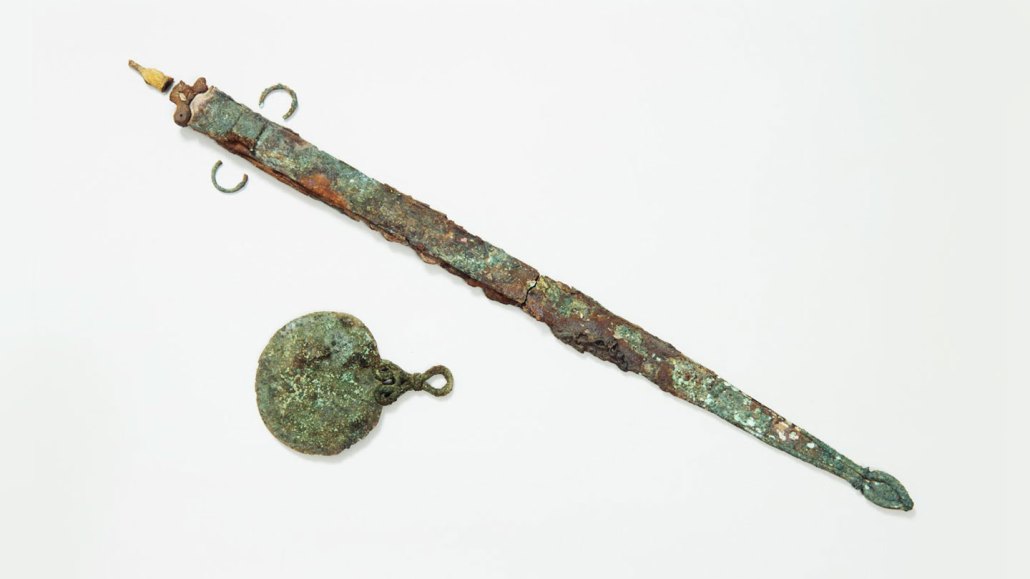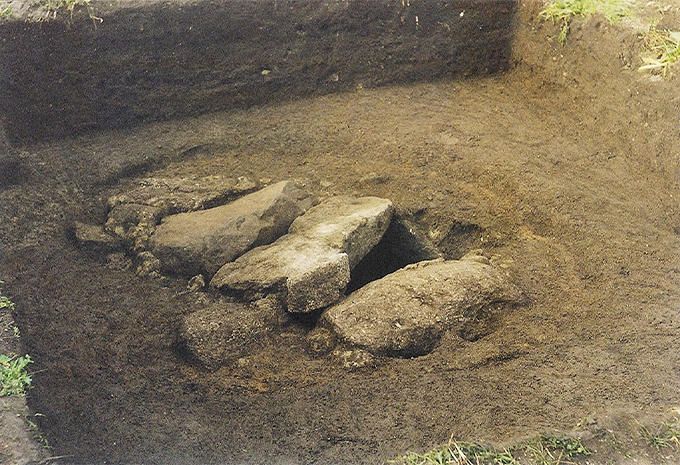Iron Age grave in England points to a possible woman warrior
A sword and mirror hint she might have fought or helped plan raids

This sword and bronze mirror set came from a roughly 2,000-year-old grave in England. They may have belonged to a woman who fought in or planned violent raids.
© Historic England Archive
Share this:
- Share via email (Opens in new window) Email
- Click to share on Facebook (Opens in new window) Facebook
- Click to share on X (Opens in new window) X
- Click to share on Pinterest (Opens in new window) Pinterest
- Click to share on Reddit (Opens in new window) Reddit
- Share to Google Classroom (Opens in new window) Google Classroom
- Click to print (Opens in new window) Print
By Bruce Bower
A mysterious 2,000-year-old grave in England might have held a warrior woman. That’s the conclusion of a new study of the remains. They were found on an island off the country’s southwest coast.
In 1999, a farmer stumbled upon the burial while plowing a field on England’s Bryher Island. The grave held a jumble of human tooth and bone fragments. It also contained a sword, shield and bronze mirror, among other items.
That combo of items has puzzled researchers. Swords are typically found in male burials from that region. Mirrors often show up in female burials. No other known western European grave from this time period has held both. So researchers were unsure whether the grave’s occupant was male or female.

Biologist Simon Mays studies human bones. He works with Historic England. This group in Portsmouth protects and studies historical sites. Mays and his colleagues were able to extract bits of protein from tooth enamel from the remains.
The bits came from a protein made by a gene found on both X and Y chromosomes. The protein forms found are linked to a gene on the X chromosome. None of the types from a Y chromosome turned up. That allowed the team to classify the mystery remains as female. The wear on her teeth suggests she died in her early twenties.
The island grave dates to between roughly 100 B.C. and 50 B.C. That’s based on previous radiocarbon dating of a partial bone. The metal objects found in the burial also point to this period, known as the Late Iron Age. Back then, communities often fought each other. And growing evidence has been suggesting that ancient women, not just men, could be warriors. The woman from this grave may have fought in raids and helped fend off enemy attacks, Mays’ team suggests.
These researchers shared their findings in the December Journal of Archaeological Science: Reports.
One possible use of the mirror was to reflect sunlight, the researchers say. Such beams of light could have served as signals to people on nearby islands and boats. Perhaps the Bryher woman used it to help plan raids or defenses.
Still, the remains show no signs of fighting. So the sword and mirror could have been heirlooms. Or mourners may have placed the items in the grave to show loyalty to the woman’s family, the researchers say.







